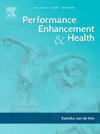Cheating and Doping in Chess – A Survey among 1,924 German Club Players using the Randomized Response Technique
IF 3.7
Q2 HOSPITALITY, LEISURE, SPORT & TOURISM
引用次数: 0
Abstract
Purpose
This study aimed to investigate the estimated 12-month prevalence of cheating behaviors (i.e., prohibited chess computer engine use or cognitive doping) among German club chess players.
Methods
An online questionnaire was completed by 1924 German club chess players. Self-reported cheating behavior was examined using game mode specific (i.e., Over the board (OTB) and/or online chess) questions on prohibited actions via randomized response technique (RRT), as well as the specific methods of cheating via direct questioning. Estimated 12-month prevalences are presented descriptively. Potential associations between skill level, age, and game mode with cheating behaviors were analyzed using the chi-square test.
Results
The study revealed estimated 12-month prevalences of 5.1 % (95 % CI: 2.5 – 7.8 %) for cognitive doping in both formats (OTB and/or online chess), 7.1 % (95 % CI: 4.3 – 9.8 %) for cheating in OTB chess, and 6.2 % (95 % CI: 3.1 – 9.3 %) for cheating in online chess. Cheating prevalence is potentially influenced by factors such as skill level, age, and game mode.
Conclusion
The study highlights the presence of cheating in the German club chess community. This highlights the need for targeted anti-cheating measures and policies by chess governing bodies and chess platforms to address this issue and secure the integrity of the sport.
国际象棋中的作弊和兴奋剂——使用随机反应技术对1924名德国俱乐部球员的调查
目的:本研究旨在调查德国俱乐部棋手在12个月内作弊行为(即禁止使用国际象棋计算机引擎或认知兴奋剂)的流行程度。方法对1924名德国国际象棋俱乐部棋手进行问卷调查。自我报告作弊行为通过随机反应技术(RRT)使用特定游戏模式(即通过棋盘(OTB)和/或在线象棋)对禁止行为的问题以及通过直接提问的特定作弊方法进行检查。描述性地列出了估计的12个月患病率。使用卡方检验分析技术水平、年龄和游戏模式与作弊行为之间的潜在关联。结果该研究显示,在两种形式(OTB和/或在线象棋)中,认知兴奋剂的12个月患病率为5.1% (95% CI: 2.5 - 7.8%),在OTB国际象棋中作弊的患病率为7.1% (95% CI: 4.3 - 9.8%),在在线国际象棋中作弊的患病率为6.2% (95% CI: 3.1 - 9.3%)。作弊的流行程度可能受到技能水平、年龄和游戏模式等因素的影响。结论本研究强调了德国俱乐部国际象棋社区中作弊行为的存在。这凸显了国际象棋管理机构和国际象棋平台需要有针对性的反作弊措施和政策来解决这一问题,并确保这项运动的完整性。
本文章由计算机程序翻译,如有差异,请以英文原文为准。
求助全文
约1分钟内获得全文
求助全文
来源期刊

Performance enhancement and health
Social Sciences-Health (social science)
CiteScore
4.70
自引率
0.00%
发文量
27
审稿时长
57 days
 求助内容:
求助内容: 应助结果提醒方式:
应助结果提醒方式:


